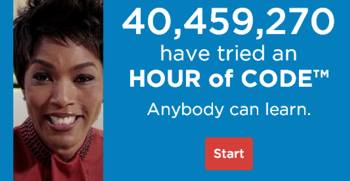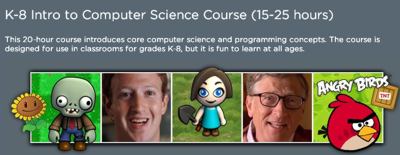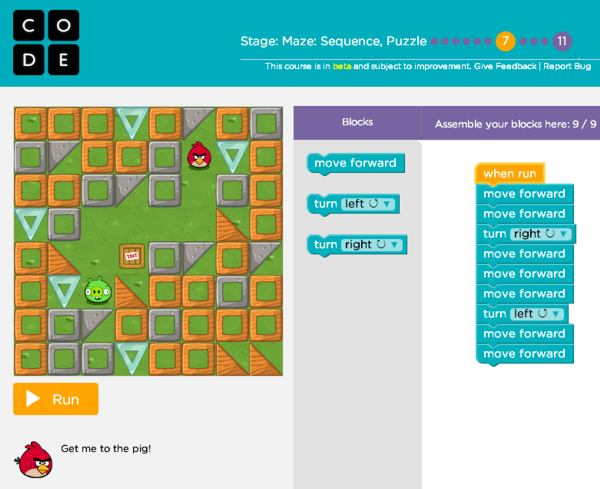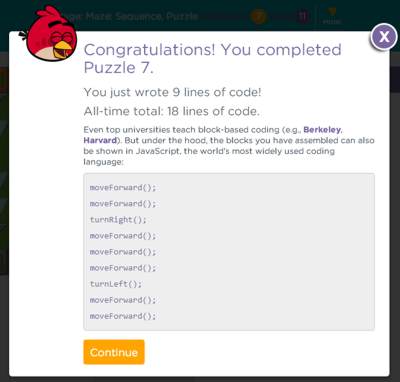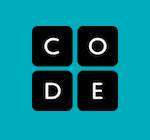| Code In The Classroom |
| Written by Sue Gee |
| Wednesday, 20 August 2014 |
|
Continuing its push to give all school students the opportunity to learn to code, Code.org is inviting educators to check out the beta of its K-5 Computer Science Curriculum, which will be launched in September.
Code.org, founded and funded by twin brothers Hadi and Ali Partovi with backing from an impressive line up of personalities including Bill Gates, Mark Zuckerberg, will.i.am of the Black Eyed Peas and NBA All-Stars Chris Bosh, has as its guiding principle: "Every student in school should have the opportunity to learn to code" It made an impressive start with the Hour of Code in which hour long programming activities were delivered in December 2013 during Computer Science Education Week. By the end of it over 16 Million people had tried it and the total has now surpassed 40 million, claiming almost 2 billion lines of code written by participants.
How do you follow up and build on the momentum of such success and get teachers to include programming and computer science every week of the year? Code.org's initial answer was a to provide a K-8 Introduction to Computer Science with 20 lessons that each required 45 minutes to an hour to complete. The course comprises both online and "unplugged' activities, which are lessons in which students can learn computing concepts with or without a computer.
Now Code.og, with further help from engineers from Google, Microsoft and Facebook has gone further with the new K-5 Computer Science Curriculum. This comprises three courses, again with both online and unplugged activities targeted at even younger school students and tailored for non-readers as well as those able to read:
According to the Code.org’s K-5 Computer Science Curriculum which has an outline description of each of the lessons: Each course consists of 18 to 20 lessons, each lasting about 30-45 minutes. They can be taught at a comfortable pace: 18 consecutive days, 1 day a week for 18 weeks, etc. The content of each course builds conceptually on the previous course, so that a student can progress through all three experiences learning new concepts along the way.
This document also explain the Code-org philosophy: Every student should have the opportunity to learn computer science, and the reasons are far more varied than simply having a strong resume. Critical thinking, logic, persistence, and creativity help students excel at problem-solving in all subject areas, no matter what their age. At Code.org, we recognize that this benefit begins early. That's why we have developed an exciting and engaging curriculum that allows students to explore the limitless world of technology, beginning in elementary school. Like the K-8 course, Blockly is used for the online activities and Rovio's Angry Bird characters put in an appearance:
Behind the scenes there is JavaScript, which can be freely inspected:
This seems a very attractive curriculum and while it has been designed with the US school system in mind it is applicable to other countries, including the UK where computer science becomes part of the official school curriculum from age 5, next week.
More InformationCode.org’s K-5 Computer Science Curriculum Beta courses for K-5 computer science K-8 Introduction to Computer Science Related ArticlesHour of Code Reaches Over 16 Million - What Next? Google Blockly - A Graphical Language with a Difference Five Reasons To Teach Kids To Code Teach Code In School - Before It's Too Late! Zuckerberg, Gates And More Promoting Computing In Schools UK To Teach Programming Starting At Age 5
To be informed about new articles on I Programmer, install the I Programmer Toolbar, subscribe to the RSS feed, follow us on, Twitter, Facebook, Google+ or Linkedin, or sign up for our weekly newsletter.
Comments
or email your comment to: comments@i-programmer.info
|
| Last Updated ( Wednesday, 20 August 2014 ) |

